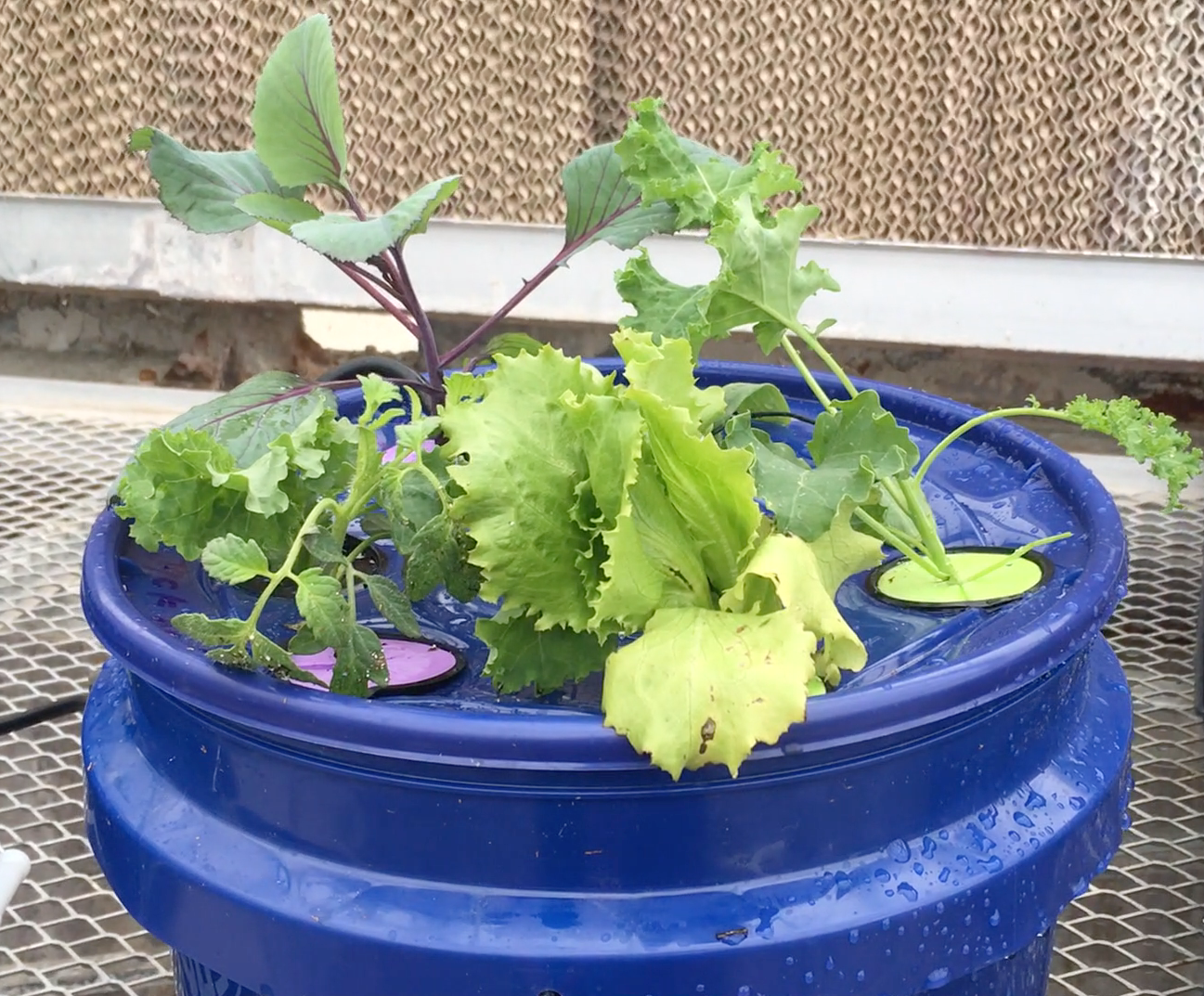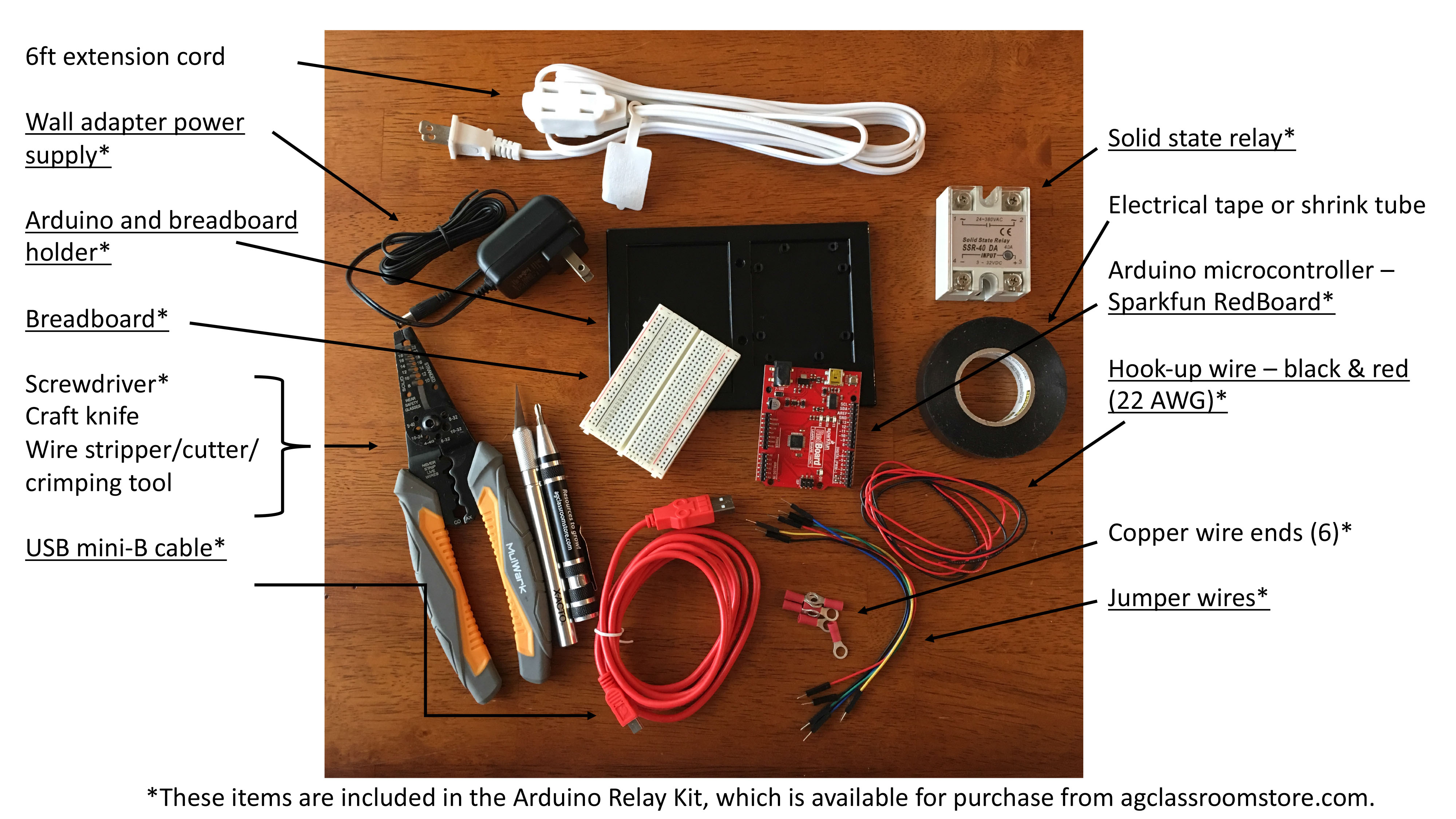Aeroponic Engineering and Vertical Farming (Grades 6-8)
Students will use the Engineering Design Process to develop and construct an aeroponic garden to grow a food crop. Students will develop and apply an understanding of plant anatomy and physiology related to plant growth and ultimately discuss the possibilities and limitations of using vertical farming to produce our food.

Background
Lesson Activities
Recommended Companion Resources
Credits
Author
Joe Furse and Andrea Gardner | National Center for Agricultural Literacy (NCAL)
Sources
Ag Facts:
- http://www.worldometers.info/water/
- Bugbee, B. (2013, November 19). Turning water into food. Retrieved from https://www.youtube.com/watch?v=qEbdv3bFKww
Background:
- http://aeroponicsdiy.com/aeroponics-misting-frequency-for-root-growth/
- http://www.aeroponics.com/siteindex2010-12.htm
- https://gardenpool.org/online-classes/how-to-make-a-simple-aeroponics-system
- The following link provides an example of a "5-gallon bucket Aeroponics system" that is the basis of the design challenge for this unit. https://gardenpool.org/online-classes/how-to-make-a-simple-5-gallon-bucket-aeroponics-system
- Garden Pool (n.d.) How to make a simple 5 gallon bucket aeroponics system. Retrieved from https://gardenpool.org/online-classes/how-to-make-a-simple-5-gallon-bucket-aeroponics-system
- Khokhar, T. (2017, March 22). Chart: Globally, 70% of fresh water is used for agriculture [Weblog comment]. Retrieved from https://blogs.worldbank.org/opendata/chart-globally-70-freshwater-used-agriculture
- Massie, L. (n.d.) Aeroponics misting frequency for root growth [Weblog comment]. Retrieved from http://aeroponicsdiy.com/aeroponics-misting-frequency-for-root-growth/
Standards
Indiana Content Area Standards
-
English Language Arts.Grade 6.RV.1
Acquire and use accurately grade-level appropriate general academic and content-specific words and phrases; gather vocabulary knowledge when considering a word or phrase important to comprehension or expression.
- Vocabulary in Literature and Nonfiction Texts.6.RV.3.2: Determine the meaning of words and phrases as they are used in a nonfiction text, including figurative, connotative, and technical meanings.
-
English Language Arts.Grade 6.SL.1
Listen actively and adjust the use of spoken language (e.g., conventions, style, vocabulary) to communicate effectively with a variety of audiences and for different purposes.
- Comprehension.6.SL.3.1: Interpret information presented in diverse media and formats (e.g., visually, quantitatively, orally) and explain how it contributes to a topic, text, or issue under study.
-
English Language Arts.Grade 7.RV.1
Acquire and use accurately grade-appropriate general academic and content-specific words and phrases; gather vocabulary knowledge when considering a word or phrase important to comprehension or expression.
- Vocabulary in Literature and Nonfiction Texts.7.RV.3.2: Determine the meaning of words and phrases as they are used in a nonfiction text, including figurative, connotative, and technical meanings; analyze the impact of a specific word choice on meaning and tone.
-
English Language Arts.Grade 7.SL.1
Listen actively and adjust the use of spoken language (e.g., conventions, style, vocabulary) to communicate effectively with a variety of audiences and for different purposes.
- Comprehension.7.SL.3.1: Analyze the main ideas and supporting details presented in diverse media and formats (e.g., visually, quantitatively, orally) and explain how the ideas clarify a topic, text, or issue under study.
- Discussion and Collaboration.7.SL.2.1: Engage effectively in a range of collaborative discussions (e.g., one-on-one, in groups, and teacher-led) on grade- appropriate topics, texts, and issues, building on others ideas and expressing personal ideas clearly.
-
English Language Arts.Grade 8.RV.1
Acquire and use accurately grade-appropriate general academic and content-specific words and phrases; gather vocabulary knowledge when considering a word or phrase important to comprehension or expression.
- Vocabulary in Literature and Nonfiction Texts.8.RV.3.2: Determine the meaning of words and phrases as they are used in a nonfiction text, including figurative, connotative, and technical meanings; analyze the impact of specific word choices on meaning and tone, including analogies or allusions to other texts.
-
English Language Arts.Grade 8.SL.1
Listen actively and adjust the use of spoken language (e.g., conventions, style, vocabulary) to communicate effectively with a variety of audiences and for different purposes.
- Comprehension.8.SL.3.1: Analyze the purpose of information presented in diverse media and formats (e.g., visually, quantitatively, orally) and evaluate the motives (e.g., social, commercial, political) behind its presentation.
- Discussion and Collaboration.8.SL.2.1: Engage effectively in a range of collaborative discussions (e.g., one-on-one, in groups, and teacher-led) on grade- appropriate topics, texts, and issues, building on others ideas and expressing personal ideas clearly.

